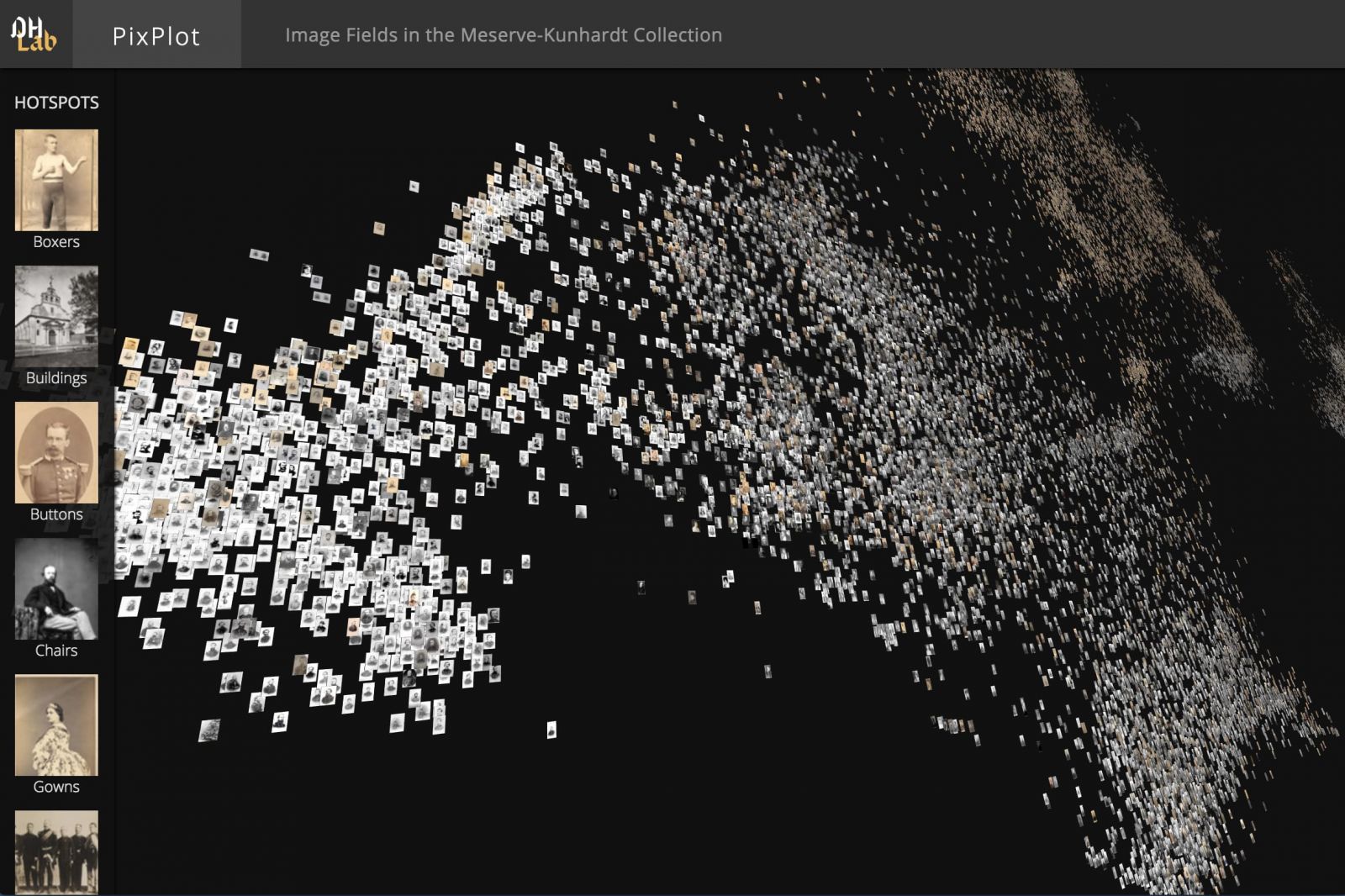The Meserve-Kunhardt Collection originated as one of the largest private collections of 19th-century photography. With over 73,000 items held by both Beinecke Rare Book and Manuscript Library and the National Portrait Gallery, the material provides rich visual documentation of United States history, especially persons, sites, and events during the American Civil War, and details the emergence of photography as a distinctive cultural practice into the early twentieth century.
In conjuction with both the Beinecke and the National Portrait Gallery, Yale’s Digital Humanities Laboratory is producing a number of “collection experiments” based on this rich archive of American visual heritage.
Neural Neighbors: Pictorial Tropes in the Meserve-Kunhardt Collection
Neural Neighbors uses two data-mining techniques to show visually-similar images to a given picture in the collection. A pre-trained Convolutional Neural Network examines each photograph and places it along 2,048 dimensions of “machine vision”, or artificial ways of seeing, derived from the penultimate layer in the captioning network. In the resulting high-dimensional space, the approximate nearest-neighbors algorithm efficiently detects the closest images and shows them on demand.
Explore Neural Neighbors yourself: hover your mouse cursor over an image to see which other pictures in the collection match it most closely. Reload the page for more images from the collection.
PixPlot: Image Fields in the Meserve-Kunhardt Collection
PixPlot is a tool to visualize tens of thousands of images from the Meserve-Kunhardt Collection all at once, giving the user a “macroscopic” perspective of the archive as a whole. Individual photographs are arranged in a kind of digital galaxy, which represents a dimensionality reduction from 2,048 vectors from the penultimate layer of a Convolutional Neural Network down to the two-dimensional space of a computer screen. Automatically-detected “constellations” of photographs are shown in a column on the left.
Explore PixPlot for yourself: Zoom in and out of the galaxy by using your scroll wheel or scroll function on your trackpad. Jump to different constellations by clicking on a representative photo in the lefthand column. And control pitch and yaw by holding your right mouse button and moving (or holding down the “D” key on your keyboard for mice without a right button.)



